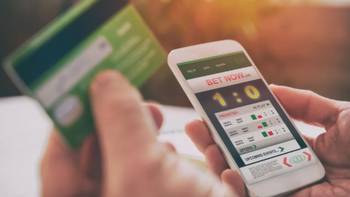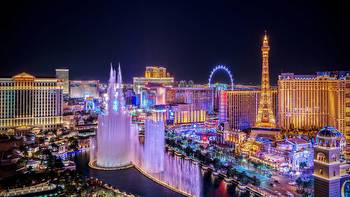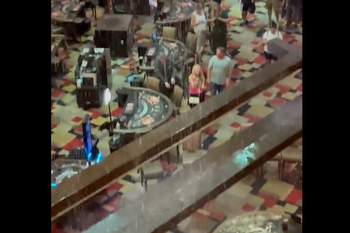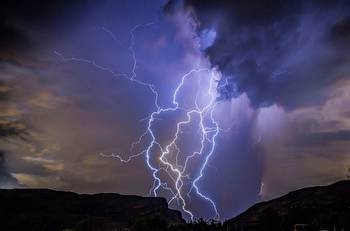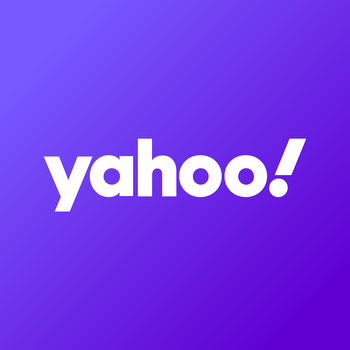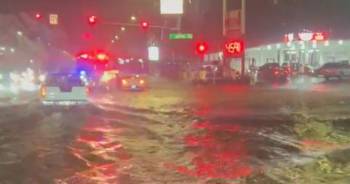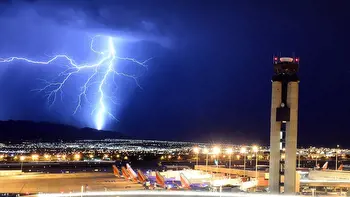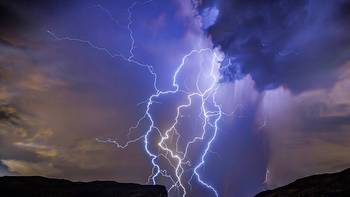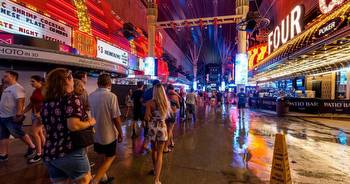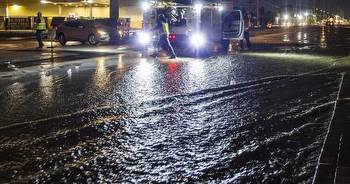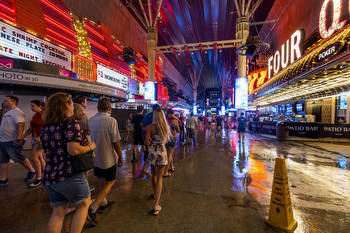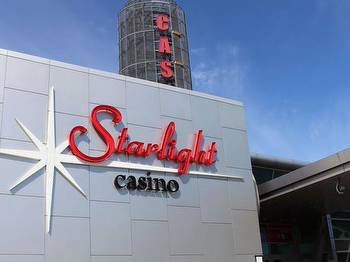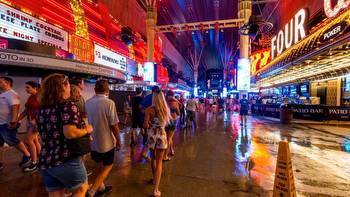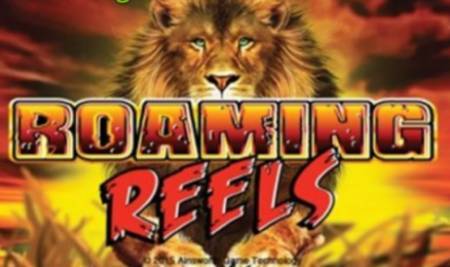Las Vegas casinos flood for second time in about two weeks, videos show

Water crashed through the ceilings of some of Las Vegas’s famous casinos Thursday night as torrential rain flooded the sites for the second time in as many weeks, contributing to an unusually wet monsoon season for the desert city.
Videos shared on social media showed water entering Caesars Palace and Planet Hollywood on the Strip amid a thunderstorm that swept into the area from the north around 8 p.m. local time. On July 28, the city was deluged by another storm that unleashed damaging winds and sent water rushing into casinos.
Inside the Caesars hotel and casino, rain fell through the ceiling onto the heads of diners in a restaurant.
Meanwhile, water pounded card tables and flooded the checkered carpet at Planet Hollywood. In parking garages, water flowed through in waves. At one point, more than 17,500 customers were without power, Las Vegas television station KLAS-TV reported.
Caesars Entertainment, which operates Caesars Palace and Planet Hollywood, did not immediately respond to an interview request.
Shortly after 9 p.m., the Weather Service issued a flood advisory for all of Clark County, where Las Vegas is located, cautioning that high water could affect low-lying and poor-drainage areas. Wind gusts of up to 64 mph were clocked at the North Las Vegas Airport and near the Strip, while the Weather Service received “multiple reports” of lightning setting trees on fire.
The area is under a flood watch from 11 a.m. Friday to midnight Saturday because of the potential for slow-moving thunderstorms that could produce heavy rain and flash flooding, according to the Weather Service. At least a 20 percent chance of afternoon and evening storms is in the forecast through Monday.
The storm delivered to Las Vegas 0.58 inches of rain, which is almost double its average rainfall for the entire month of August — 0.32 inches.
The city’s precipitation total for this monsoon season, which began June 15, also rose to 1.28 inches — the most in a decade, according to the National Weather Service. The rainfall total could increase further before the season ends Sept. 30.
Both recent flooding events were spurred by the Southwest monsoon, which develops each summer as prevailing winds shift from out of the west to out of the south, drawing a surge of humidity northward. This year’s Southwest monsoon has been particularly intense, helping to relieve drought conditions in the region but also causing many significant flood events. Last week, 1,000 people were stranded in California’s Death Valley National Park because of a 1-in-1,000-year downpour.
Scientists say human-caused warming of the climate is intensifying extreme precipitation events. Hotter air speeds up evaporation and makes more water available in the atmosphere for downpours. The Intergovernmental Panel on Climate Change found some evidence that rainfall from the Southwest monsoon has increased since the 1970s.









